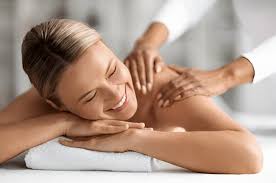Varicose veins are not just a cosmetic concern; they are often accompanied by discomfort, swelling, and even a feeling of heaviness. While some risk factors, such as genetics and age, are beyond individual control, lifestyle choices may play a role in influencing vein health. Understanding and adopting specific habits could support overall vein function and reduce the appearance of venous issues.
Understanding the Cause of Varicose Veins
Varicose veins are enlarged, swollen veins that often appear dark purple or blue and are typically found in the legs. They develop when the one-way valves inside the veins weaken or become damaged, causing blood to flow backward and pool within the vein. This pooling increases pressure, leading to varicose veins’ characteristic twisting and bulging appearance. Veins in the legs are particularly vulnerable due to the added challenge of pumping blood upward, against gravity, back to the heart.
Prolonged standing or sitting, obesity, and hormonal changes can all contribute to the development of varicose veins. This places additional strain on the veins and compromises their normal function. Recognizing the underlying mechanisms of varicose veins is a valuable step toward managing and preventing their progression.
Promoting Circulation Through Movement
Maintaining regular physical activity is a great way to support healthy circulation. Exercises like walking, swimming, or cycling help blood flow back to the heart and helps reduce stagnation in the lower limbs. Taking short movement breaks during work hours helps improve blood flow for those who sit or stand for long periods. Simple activities like stretching or flexing the ankles and legs are effective for enhancing circulation.
Maintaining a Balanced Weight
Carrying excess weight puts extra pressure on the veins and can disrupt proper blood flow. This increases the risk of vein issues like varicose veins or deep vein thrombosis. Maintaining a healthy weight supports better vein function and overall vascular health.
Adopting a balanced diet rich in whole grains, fruits, vegetables, and lean proteins provide the nutrients needed to strengthen blood vessels and improve circulation. By combining healthy eating habits with regular exercise, individuals can take proactive steps to preserve their vein health and enhance overall well-being. Staying hydrated and avoiding excessive salt intake can further support optimal circulation and vascular health.
Choosing Supportive Footwear Options
Footwear affects blood circulation, especially when standing for long periods. Shoes that prioritize comfort and alignment reduce strain on the legs. High heels may look fashionable but can restrict blood flow over time. For some people, compression socks or stockings can provide extra support. These apply gentle pressure to help blood move back to the heart from the legs.
Keeping Vein Health a Priority
Lifestyle adjustments encourage optimal vein function and support overall well-being. Building habits like incorporating movement into everyday activities, selecting footwear that supports circulation, and focusing on weight management may positively impact vein health. The connection between lifestyle choices and vein health highlights the value of proactive steps for discomfort prevention. Prioritizing supportive practices could contribute to a greater sense of comfort and long-term wellness.

Leave a Reply